Results
-
 £248.99
£248.99Missa Brevis Wind Band Set (Score & Parts)
Missa Brevis, written for choir and wind band, was commissioned by the Conseil D?partemental pour la Musique et la Culture de Haute-Alsace (Dir.: Philippe Pfisterer) in Guebwiller (France), in celebration of the millennium of Pope Leon IX's birth in ?guisheim (France). The composer conducted the first performance on June 23, 2002. It was performed live for the French television channel France 2. The mass movements Kyrie, Gloria, Credo, Sanctus, Benedictus, and Agnus Dei are very suitable for the Catholic as well as the Protestant liturgy. For this mass, various ways for performing in diverse variable strengths are possible. An instrumental performance is possible if the brass represents the choir parts. In this option, it is desirable for the brass to be positioned separately from the rest of the band (on a gallery, for example), so that the idea of two choirs is approached. In a performance with a large choir, the brass can work very well as a support. In that case, the dynamics of the brass should be adapted somewhat, since these are actually intended for an instrumental performance. You can also leave out the brass entirely for the benefit of the choir. For the accompaniment of smaller choirs, you can opt for a small ensemble from the band. This can also be a quartet, put together as desired. For the performance of this mass, the obvious choice is one of the above options. However, as an alternative, a performance with a combination of these options (vocally/instrumentally) is also possible - not just from an artistic point of view (variation), but also from a practical starting point - for example in the case that the choir has rehearsed only two movements. With a full strength, the conductor can vary the instrumentation to his or her liking. Then the brass can also play a role in the accompaniment (instead of supporting the choir). The following combinations are possible: 1. clarinet choir (from Eb Clarinet to Bass Clarinet) 2. clarinet choir + saxophones 3. brass (flugelhorns, horns, euphoniums, bass section) 4. brass (2 trumpets / 2 trombones) 5. double reeds (optional + flute, optional + string bass) 6. tutti 7. all winds 8. all brass In a performance by brass band and choir, it is usually advisable to leave out option 1 (choir + brass + band). The choir sings self-reliantly, accompanied by a full brass band. In an instrumental performance, you can consider a combined quartet (two cornets and two trombones) + brass band. Choral parts available separately. 0:20:00
Estimated dispatch 7-14 working days
-
 £79.99
£79.99Supernova - Thierry Deleruyelle
Supernova is an energetic piece in a pop style that inspires joy and good humour, its rhythm giving it an exceptionally lively and festive character. Its theme is renewal, rebirth and solidarity in the wake of the COVID-19 pandemic. The Confdration Musicale de France commissioned this work as part of the initiative "Concerts solidaires au profit de l'enfance en France et dans le monde" (Concerts in aid of children in France and worldwide).
Estimated dispatch 7-14 working days
-
 £248.99
£248.99Missa Brevis - Jacob de Haan
Missa Brevis, written for choir and wind band, was commissioned by the Conseil Dpartemental pour la Musique et la Culture de Haute-Alsace (Dir.: Philippe Pfisterer) in Guebwiller (France), in celebration of the millennium of Pope Leon IX'sbirth in guisheim (France). The composer conducted the first performance on June 23, 2002. It was performed live for the French television channel France 2. The mass movements Kyrie, Gloria, Credo, Sanctus, Benedictus, and Agnus Deiare very suitable for the Catholic as well as the Protestant liturgy. For this mass, various ways for performing in diverse variable strengths are possible. An instrumental performance is possible if the brass represents the choir parts. In thisoption, it is desirable for the brass to be positioned separately from the rest of the band (on a gallery, for example), so that the idea of two choirs is approached. In a performance with a large choir, the brass can work very well as a support. Inthat case, the dynamics of the brass should be adapted somewhat, since these are actually intended for an instrumental performance. You can also leave out the brass entirely for the benefit of the choir. For the accompaniment of smaller choirs, youcan opt for a small ensemble from the band. This can also be a quartet, put together as desired. For the performance of this mass, the obvious choice is one of the above options. However, as an alternative, a performance with a combination of theseoptions (vocally/instrumentally) is also possible not just from an artistic point of view (variation), but also from a practical starting point for example in the case that the choir has rehearsed only two movements. With a full strength, theconductor can vary the instrumentation to his or her liking. Then the brass can also play a role in the accompaniment (instead of supporting the choir). The following combinations are possible:1. clarinet choir (from Eb Clarinet to BassClarinet)2. clarinet choir + saxophones3. brass (flugelhorns, horns, euphoniums, bass section)4. brass (2 trumpets / 2 trombones)5. double reeds (optional + flute, optional + string bass)6. tutti7. all winds8. allbrassIn a performance by brass band and choir, it is usually advisable to leave out option 1 (choir + brass + band). The choir sings self-reliantly, accompanied by a full brass band. In an instrumental performance, you can consider a combinedquartet (two cornets and two trombones) + brass band.Choral parts available separately.
Estimated dispatch 7-14 working days
-
£132.00
The Maid Of Orleans (CB) - Wouter Vercruysse
Domrmy (France), 1412. In turbulent times of war, Joan of Arc is born, the woman who will play a decisive role in the centennial war between France and England. Even during her childhood, she hears a voice, the voice of God. That voice asks her to help the king and break the siege of Orleans. She achieves victory after victory and hence witnesses the king's coronation. Joan is arrested and burned at the stake on suspicion of heresy. It takes centuries, but eventually her name is cleared and Joan of Arc is declared a saint.
Estimated dispatch 7-14 working days
-
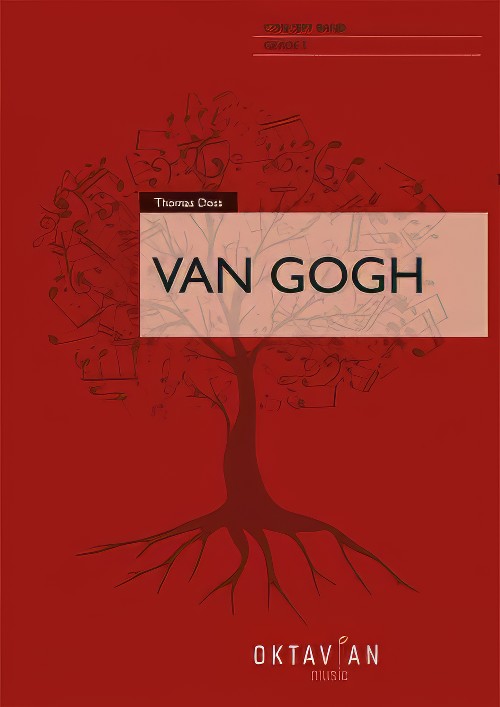 £279.99
£279.99Van Gogh (Concert Band - Score and Parts) - Doss, Thomas
This composition is not a work inspired by the life of the famous painter, but rather an attempt at a pictorial immersion into his world. In addition to Van Gogh's character and tragic life, the technique he employed to create his works, the bright colours of his paintings and his view of nature served as inspiration for this musical work. Point by point, stroke by stroke, Van Gogh brought his own world to life on canvas.On the life of Van Gogh: The Dutch artist Vincent van Gogh was one of the most important pioneers of Modernism, despite being relatively unknown during his own lifetime. As an artist, he chose a life of poverty and seclusion. From today's perspective, his important woks were created from 1880 onwards, when he had already more or less succumbed to madness. While his earlier works could still be classed as contemporary, he matured into a pioneer of Expressionism with his later work indicating an increasing self-awareness. He was just 37 years old when he died but he created over 750 paintings and 1600 drawings in the last ten years of his life.The structure of the work:Start: Brushes and Paints: Van Gogh retired to Arles in southern France where he found his artistic home. The colours and flowering gardens of this landscape awakened in him an unbelievably great creative power.A: A Picture Comes into Being: Van Gogh's psychotic episodes and bouts of depression did not stop him from painting wonderful pictures. Hardly anyone recognised his genius during his lifetime, on the contrary, he often felt misunderstood.C: Paris - Arles: In Paris (from 1886), Van Gogh became inspired by the French art scene. His works found few takers, however. He met and befriended the painter Paul Gauguin, but the lack of success made Van Gogh short tempered, and he began to drink. Eventually, he moved from Paris to Arles in the south of France to establish an artists' collective with Gaugin. Within a few weeks, the two got into such a violent argument that Van Gogh attacked his friend with a knife. The friends parted ways and afterwards Van Gogh cut off his right ear. In 1889 he voluntarily admitted himself into a mental hospital at St. Remy, suffering from hallucinations and fearing that he would lose his mind.G: The Starry Night One of his most famous paintings, created in 1898.H: Death and Brotherly Love Vincent van Gogh accepted an invitation to Auver-sur-Oise in 1890. This was one of his most intensive creative periods. He also went there for treatment, but his mental state hardly improved. After an extended walk, he injured himself fatally with a pistol under mysterious circumstances. Not even to his beloved brother Theo, who had supported him all his life, did he reveal on his deathbed how the accident had occurred.J: Art Market Today, Van Gogh's paintings are among the most expensive paintings on the art market. How ironic, given that he could hardly sell a painting during his lifetime. "I put my heart and soul into my work and lost my mind in the process." (Vincent van Gogh)Duration: 13.15
Estimated dispatch 7-14 working days
-
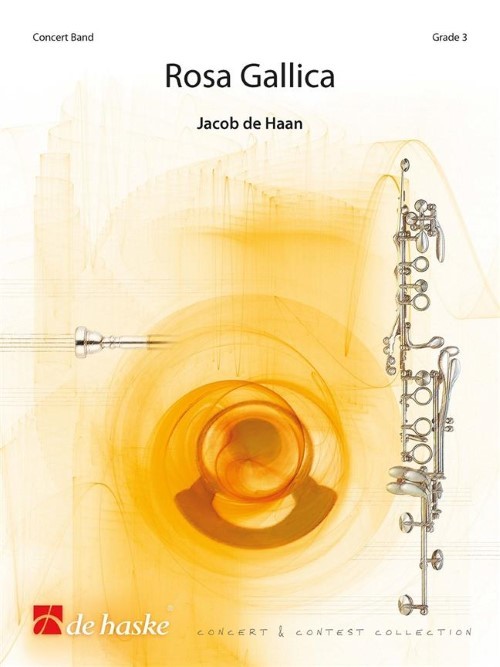 £119.99
£119.99Rosa Gallica (Concert Band - Score and Parts) - De Haan, Jacob
Rosa Gallica has been written to commemorate the centenary of the First World War. The work focuses largely on France as a lot of the fighting took place there. With the title Rosa Gallica (French rose), the composer wishes to emphasize the poetic image of the rose. The stem represents the years gone by - such as those taken up by the First World War - and the thorns refer to the conflict and the pain that the victims had to endure. The rose itself forms the picture of beauty - and symbolises opening up to a peaceful world. The piece depicts France from the end of the 19th century through to its role at the heart of the First World War and beyond. A spectacular and dramatic new work by Jacob de Haan. Duration: 8.30
Estimated dispatch 7-14 working days
-
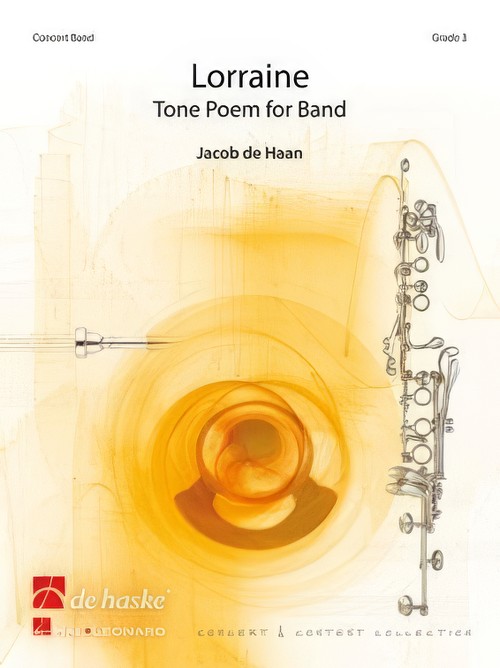 £139.99
£139.99Lorraine (Concert Band - Score and Parts) - De Haan, Jacob
This moving symphonic poem is about the French region of Lorraine. Since the time of the Roman Empire, Lorraine has been ruled by either Germany or France with wars redrawing national boundaries many times over the years. While its history has been bloody, folk music from the region breaks up the tension in the piece and offers many uplifting moments. An optimistic conclusion features a mixture of music from the three countries Lorraine sits between: Luxembourg, Germany and France.Duration: 10:45
Estimated dispatch 7-14 working days
-
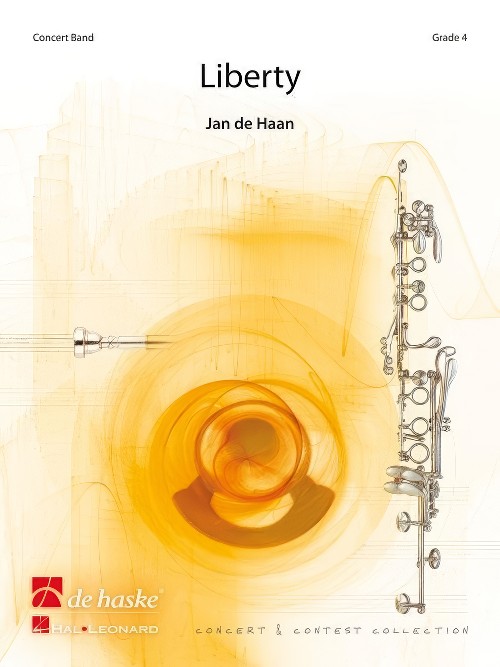 £209.99
£209.99Liberty (Concert Band - Score and Parts) - De Haan, Jan
This three-movement work is a tribute to French sculptor Frederic Auguste Bartholdi. The first movement depicts what is without a doubt Bartholdi's most famous sculpture, the Statue of Liberty in New York, which also gives this piece its name. Next listeners get to experience the trumpeting angels, which can be seen atop the First Baptist Church in Boston. The final movement takes listeners to France to view the Lion of Belfort in France.Duration: 14:30
Estimated dispatch 7-14 working days
-
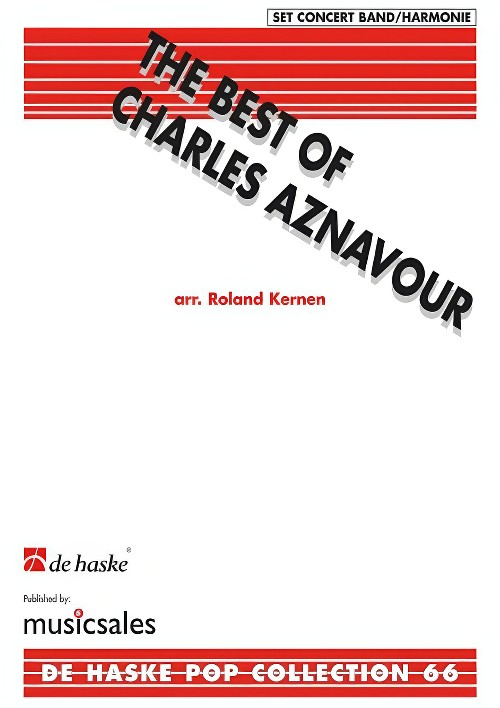 £122.50
£122.50The Best of Charles Aznavour (Concert Band - Score and Parts) - Kernen, Roland
Charles Aznavour, the son of Armenian immigrants, was born in 1924, in Paris. He finally launched his singing career in France with great effort; despite his lack of star looks and less than remarkable voice. However, he had two things going for him: powerful on-stage charisma and great willpower. It took him about twenty years to reach the top but when he did, his determination certainly paid off. He became a star singer/songwriter in France and his chansons were embraced throughout the rest of the world as well. The typical French atmosphere that pervades his music can be clearly experienced in this medley for concert band.
Estimated dispatch 7-14 working days
-
 £94.99
£94.99Po?'me Fran?'ais (Ballade) Wind Band Set (Score & Parts)
This ballad will take you to the countryside of France, where a genuine peace prevails. Picturesque villages and magnificent vistas in a musical way to show you this magnificent musical tribute to La France. An attractive sonorous melody is the basis for this composition using a effective instrumentation. 04:30
Estimated dispatch 7-14 working days
